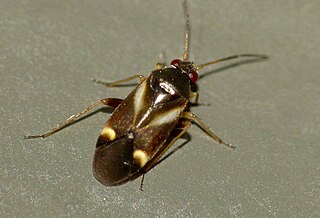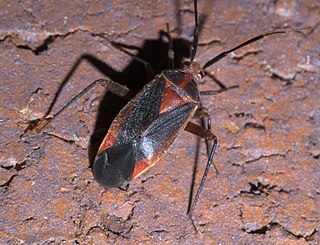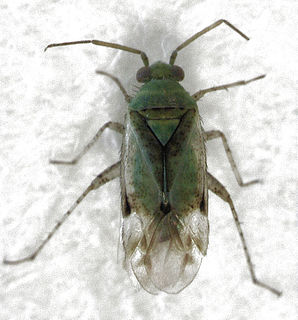
The Miridae are a large and diverse insect family at one time known by the taxonomic synonym Capsidae. Species in the family may be referred to as capsid bugs or "mirid bugs". Common names include plant bugs, leaf bugs, and grass bugs. It is the largest family of true bugs belonging to the suborder Heteroptera; it includes over 10,000 known species, and new ones are being described constantly. Most widely known mirids are species that are notorious agricultural pests that pierce plant tissues, feed on the sap, and sometimes transmit viral plant diseases. Some species however, are predatory.
José Cândido de Melo Carvalho was a Brazilian zoologist who specialized in entomology and was a world authority on the true bugs or Hemiptera. He was director of the Museu Paraense Emílio Goeldi (1955–1960), in Belém, and of the Museu Nacional do Rio de Janeiro. His abilities both in science and in the field of politics helped Brazil to develop and maintain a high level of systematic biology.
Eccritotarsus catarinensis is a species of plant bug from Santa Catarina, Brazil. It is a sap-feeding mirid that removes a considerable amount of chlorophyll from water hyacinth.

Phylinae is a subfamily of the plant bug family Miridae. Species of this family are found worldwide.

Tytthus is a genus of insects in family Miridae, the plant bugs. They are carnivorous, feeding upon the eggs of various planthoppers in the family Delphacidae, and thus are important in the biological control of pests. The genus is distributed throughout the Holarctic of the Northern Hemisphere, but species are also found in the tropics, in China, South America, Australia, and the Indo-Pacific.

Bryocorinae is a subfamily of bugs in the family Miridae.

Dicyphini is a tribe of bugs in the family Miridae.

Deraeocorinae is a subfamily of plant bugs in the family Miridae. There are more than 40 genera and around 500 described species in Deraeocorinae.

Hyaliodes is a genus of plant bugs in the family Miridae. There are at least 20 described species in Hyaliodes.
Paraproba is a genus of plant bugs in the family Miridae. There are at least 20 described species in Paraproba.

Eccritotarsini is a tribe of plant bugs in the family Miridae. There are about 14 genera and at least 40 described species in Eccritotarsini.
Sericophanes is a genus of plant bugs in the family Miridae. There are more than 20 described species in Sericophanes.

Leucophoropterini is a tribe of plant bugs in the family Miridae. There are more than 20 genera and over 100 species in Leucophoropterini. Most species of this tribe are found in eastern Asia and Australia, with a single genus, Tuxedo, found in North America.

Taedia is a genus of plant bugs in the family Miridae. There are more than 80 described species in Taedia.
Eustictus is a genus of plant bugs in the family Miridae. There are more than 30 described species in Eustictus.

Garganus is a genus of plant bugs in the family Miridae. There are about 12 described species in Garganus.

Hallodapini is a tribe of plant bugs in the family Miridae. There are more than 50 genera in Hallodapini.
Mexicomiris is a genus of plant bugs in the family Miridae. There are about seven described species in Mexicomiris.

Nasocorini is a tribe of plant bugs in the family Miridae. There are more than 50 genera in Nasocorini.

Semiini is a tribe of plant bugs in the family Miridae. There are more than 30 genera in Semiini.












